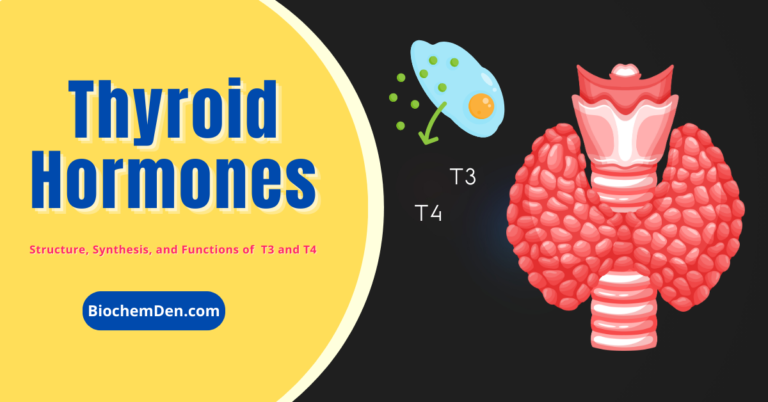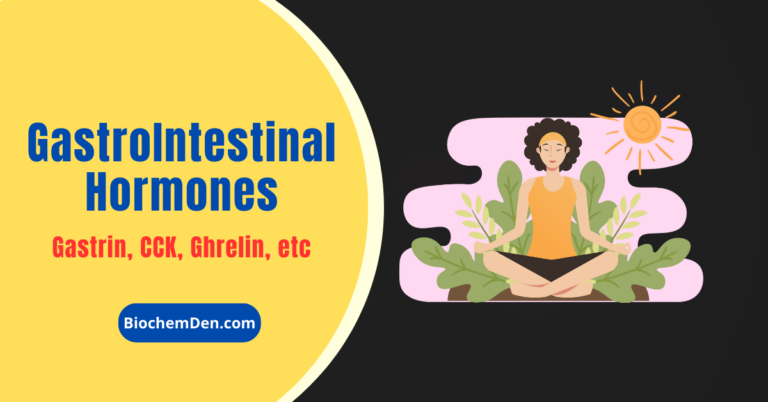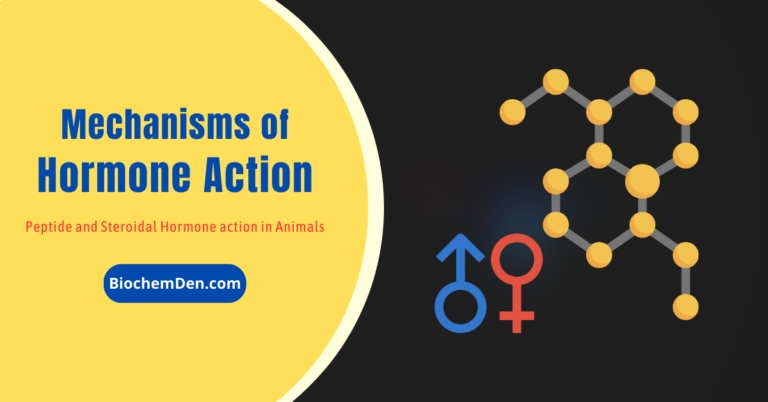Hormones are crucial chemical messengers that regulate many of the body’s complex functions and processes. They are secreted by the endocrine glands and transported by the circulatory system to target cells, where they bind to specific receptors and initiate responses.
Hormones play a vital role in homeostasis, allowing the body to maintain a stable internal environment despite external fluctuations. This article will provide a comprehensive overview of the different types, functions, production, transport, and effects of hormones in the human body.
It will also cover common hormone disorders and imbalances. The goal is to give readers a deeper understanding of the physiology and significance of these influential signaling molecules.
What Is a Hormone?
A hormone is a chemical messenger released by endocrine glands that regulates and coordinates various functions in the body. Some key points about hormones:
- Hormones are secreted into the bloodstream and carried to target tissues where they elicit a response.
- They act on specific target cells that have receptors for that particular hormone.
- Hormones regulate many critical bodily processes like metabolism, growth, reproduction, mood, and tissue function.
- They help maintain homeostasis by coordinating responses to internal and external changes.
- Major hormone producing glands include the hypothalamus, pituitary, thyroid, adrenals, pancreas, ovaries, and testes.
- The main types of hormones are peptide hormones, steroid hormones, amines, and protein hormones. They differ in their chemical structure.
- Hormones work through negative feedback loops, where high levels turn off their own production, and positive feedback, where they stimulate further release.
- Imbalances in hormones lead to disorders like diabetes, thyroid disease, infertility, and growth abnormalities.
Hormones are influential chemical messengers that play an integral role in regulating the body’s physiology and biochemistry. They provide an important means of communication between organs and tissues to maintain normal function.
What is Endocrinology?
The study of Endocrine glands and their functions is called ‘Endocrinology’ the term introduced by PENDE. Vertebrates have been attained its systems in evolution. The systems are Respiratory system, Circulatory system, excretory system, Digestive system, Nervous system, Endocrine system, and some other systems.
In this, there are two integrated systems functioning in Homeostasis in vertebrates including humans. These are the Nervous system and the Endocrine system. In this post, we can discuss the details about the Endocrine system, Endocrine secretions, and their functions.
What is Endocrine Gland and What are Hormones?
(endonG=within; krineinG=to separate or distinguish). Endocrine glands are also called Ductless Glands. A ductless gland producing hormonal secretions that pass directly into the bloodstream (or) Lymph.
Bayliss and Starling (1902) defined an endocrine gland is a ductless gland that synthesizes and then, upon appropriate stimulation, Release into the Blood Stream a chemical agent or Hormone.
The Hormones or the chemical messenger is carried by the blood throughout the body of the animal to target cells that possess specific receptor sites for hormones.
How many Glands are Present in Human?
The Principle Endocrine Glands in Human being
- Head Region (Two Glands): Pineal and Pituitary Gland
- Neck Region (Three Glands): Thymus, Thyroid, and Parathyroid
- Abdominal Region (Four Glands): Pancreas, Gastrointestinal mucosa, Adrenals, and Gonads
How to Classify the Endocrine Gland secretions (Hormone)?
A) Based on their site on the action, the hormones are of two types:
a) Local Hormones: It has specific local effects, where their nomenclature. E.g.: Acetylcholine, Secretin, Cholecystokinin, Serotonin, Histamine, Angiotensin, Bradykinin & Kallidin.
b) General Hormones: These are secreted by specific endocrine glands and are transported in the cause of physiologic actions at points remote from their place of origin.
- Some general hormones affect almost all cells of the body. E.g.: GH, Thyroid hormones
- Some general hormones affect specific tissues far more than other tissues. E.g.: Adrenocorticotropin, Ovarian hormone
B) A classification of vertebrate hormones, based on their chemical composition:
- Steroidal Hormones
- Peptide Hormones
- Amino acid derivatives
Endocrine Glands, Secretions, and their functions
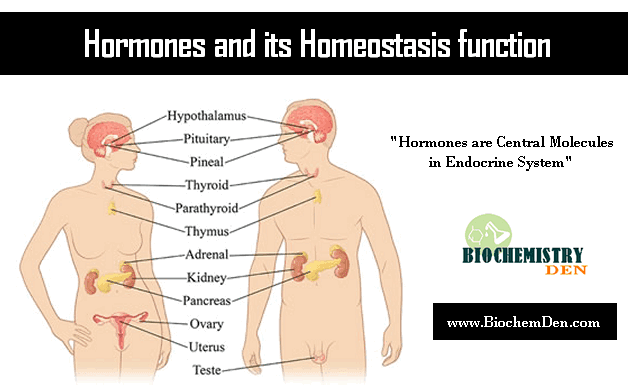
| Endocrine Gland | Lobes/Parts | Hormones |
|---|---|---|
| A) Pituitary Gland | 1. Anterior pituitary lobe (70%) | – Growth Hormone (GH) – Adrenocorticotrophic hormone (ACTH) – Luteinizing Hormone (LH) – Follicular Stimulating Hormone (FSH) – Thyroid-stimulating Hormone (TSH) |
| 2. Middle lobe (5%) | – Melanocyte stimulating Hormone (MSH) | |
| 3. Posterior pituitary lobe (25%) | – Vasopressin – Oxytocin (or Ocytocin) | |
| B) Thyroid Gland | Thyroxine (T3 and T4) | – Thyroxine (T3 and T4) |
| C) Pancreatic Hormones | Pancreas | – Insulin (Reduces Blood Glucose levels) – Glucagon (Raises Blood Glucose levels) – Somatostatin |
| D) Adrenal Glands | Adrenal Cortex Region | – Mineralocorticoids – Glucocorticoids |
| Adrenal Medullary Region | – Epinephrine (or Adrenalin) – Nor-Epinephrine (or Nor-Adrenalin) | |
| E) Gonads | Androgens | – Male sex hormones (C-19 steroids) |
| Estrogens | – Female sex hormones (C-18 steroids) | |
| Progesterone | – C-21 steroid produced during the luteal phase of the menstrual cycle and during pregnancy |
Types of Hormones
Hormones come in diverse forms, each playing a unique role in regulating bodily functions. The main categories of hormones are proteins and peptides, steroids, and amines, each with distinct chemical structures and mechanisms of action, allowing them to coordinate a wide range of physiological processes and maintain homeostasis in the body.
Endocrine vs. Exocrine Glands
The body contains two types of glands:
- Endocrine glands: secrete hormones directly into the bloodstream to reach target cells throughout the body. Examples include the pituitary, thyroid, adrenal, and gonads.
- Exocrine glands: Secrete substances through ducts or tubes. Examples include sweat, salivary, and mammary glands. Exocrine secretions are not considered hormones.
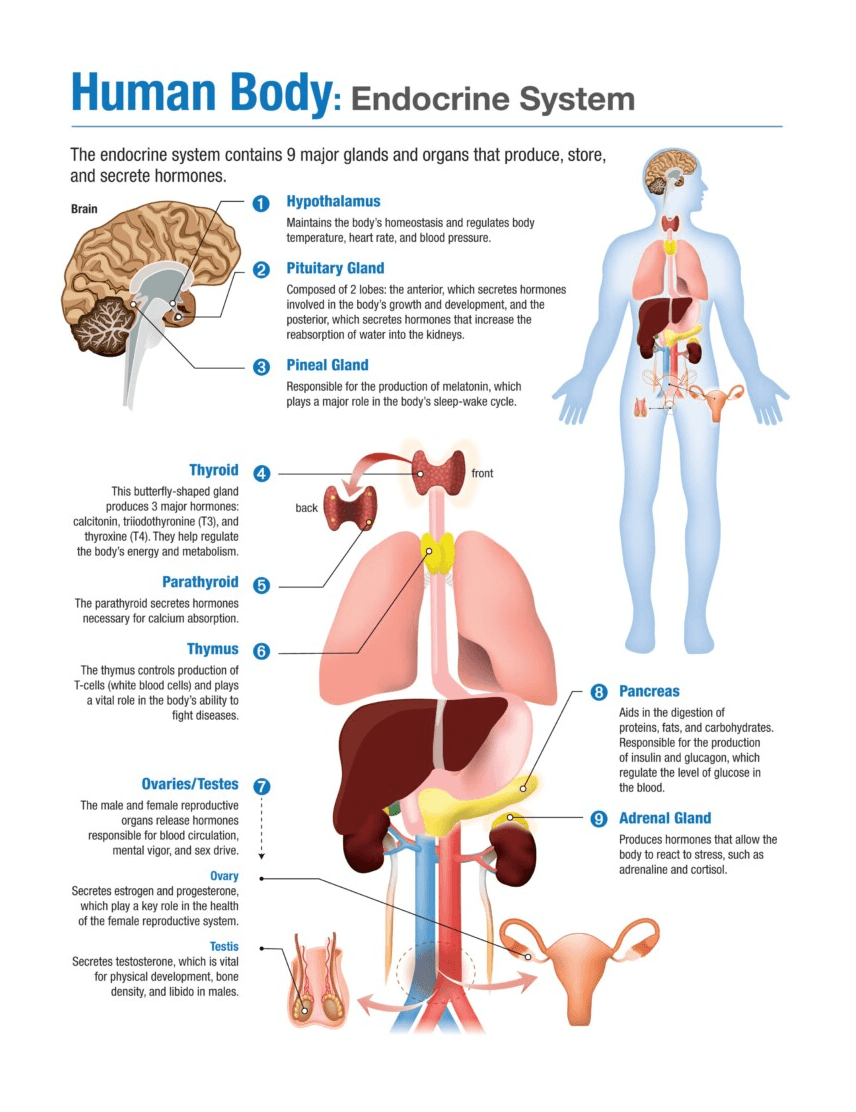
Classification of Hormones
Hormones can be divided into four main structural classes based on their chemical composition:
a. Peptide Hormones
- Peptide hormones are made up of chains of amino acids linked together.
- They are synthesized like proteins in the ribosomes of the endocrine cells.
- The amino acid sequence determines each peptide hormone’s specific shape and function.
- Examples of peptide hormones include insulin, growth hormone, oxytocin, and adrenocorticotropic hormone (ACTH).
- Peptide hormones are water-soluble and cannot enter target cells directly.
- They bind to cell surface receptors that activate intracellular signaling molecules.
- Pancreatic hormones are primarily peptide hormones. The pancreas produces several important hormones, including insulin and glucagon, both of which are classified as peptide hormones. These hormones are composed of amino acids and play a crucial role in regulating blood glucose levels and overall metabolic processes in the body.
b. Steroid Hormones
- Steroid hormones are derived from cholesterol and have a similar four-ring structure.
- Examples include cortisol, aldosterone, testosterone, and estrogen.
- They are lipid-soluble and can freely diffuse across the target cell membranes.
- Inside cells bind to steroid hormone receptors that act as transcription factors to alter gene expression and protein synthesis.
c. Amine Hormones
- Amine hormones contain nitrogen and are synthesized from the amino acids tyrosine and tryptophan.
- Examples include epinephrine, norepinephrine, thyroid hormones T3 and T4, and melatonin.
- Most are water-soluble, so they bind to surface receptors of target cells.
- Amine hormone synthesis involves modifications like methylation and oxidation reactions.
d. Protein Hormones
- Protein hormones have a more complex structure and are larger.
- They include hormones like follicle-stimulating hormone (FSH), luteinizing hormone (LH), and human growth hormone (hGH).
- These are assembled from amino acids, just like other proteins.
- Being water-soluble, protein hormones cannot enter target cells but bind to specific cell surface receptors.
| Hormone Type | Composition | Solubility | Examples |
|---|---|---|---|
| Peptide | Amino acid chains | Water-soluble | Insulin, growth hormone |
| Steroid | Cholesterol-derived | Lipid-soluble | Estrogen, testosterone, cortisol |
| Amine | Contain nitrogen | Water-soluble | Epinephrine, thyroid hormones |
| Protein | Large proteins | Water-soluble | FSH, LH |
Hormone Production and Regulation
Within the intricate symphony of the endocrine system, specialized glands orchestrate the production and release of hormones, the molecular messengers that govern a multitude of physiological processes.
These glands, acting as biological conductors, respond to a complex interplay of internal and external cues, fine-tuning hormone synthesis and secretion to maintain the delicate balance of the body’s internal environment.
This intricate regulatory dance ensures that hormones are released in precise quantities, at the right time and place, to exert their specific effects on target cells, maintaining the harmony of life’s processes.
a. Endocrine Glands and Their Functions
The major endocrine glands and their primary hormones include:
- Hypothalamus: Produces regulatory hormones that control other glands like oxytocin, ADH, and TRH.
- Pituitary: Master endocrine gland; produces hormones including GH, TSH, FSH, LH, ACTH, prolactin
- Thyroid: Produces thyroid hormones T3 and T4, which control metabolism.
- Parathyroids: Produce parathyroid hormone (PTH) to regulate calcium levels
- Adrenal Glands: The outer cortex produces glucocorticoids, mineralocorticoids, and androgens; the inner medulla produces epinephrine
- Pancreas: Produces insulin and glucagon to regulate blood glucose.
- Ovaries: Produce estrogen, progesterone, and ovulation hormones
- Testes: produce testosterone and sperm production hormones.
b. Hormone Synthesis and Secretion
- Hormones are synthesized within gland cells from precursor molecules like cholesterol or amino acids.
- Specific stimuli like other hormones, nervous input, or changes in blood levels trigger their release.
- Most are stored in granules until cellular signaling activates secretion into the bloodstream.
- The secretion rate and amount released are tightly regulated.
c. Negative and Positive Feedback Mechanisms
- Negative feedback – The hormone turns off its own production in response to sufficient levels. For example, thyroid hormone signals to lower further thyroid secretion once optimal levels are reached. It prevents overproduction.
- Positive feedback – The hormone increases its secretion when activated. For example, oxytocin promotes stronger uterine contractions during childbirth, further increasing oxytocin release. It amplifies the response.
d. Factors Affecting Hormone Levels
- Other hormone secretions and interactions
- Diet, nutrition, body weight
- Age, growth phases
- Pregnancy and childbirth
- Stress levels
- Drugs, medications, alcohol
- Sleep cycles
- Illnesses and medical conditions
Hormone Transport and Target Cells
Hormones, the chemical messengers of the endocrine system, embark on a remarkable journey from their site of production to their designated target cells, where they exert their specific effects.
These intricate molecules, whether water-soluble or lipid-soluble, navigate the bloodstream, relying on transport proteins or diffusion to reach their intended destinations.
Once there, they engage in a delicate dance with specialized receptors, unlocking a cascade of cellular events that shape diverse physiological processes, from growth and development to metabolism and reproduction.
a. Circulation of Hormones in the Blood
- Once released, water-soluble hormones quickly dissolve into the bloodstream.
- Lipid-soluble hormones bind to plasma proteins that serve as carriers. Common carriers include albumin and steroid-binding globulins.
- Bound hormones do not activate target cells and are released slowly over time. It extends their duration of action.
b. Specificity of Hormone-Target Cell Interactions
- Each hormone affects specific target cells containing appropriate receptors.
- Cells lacking the matching receptors will not respond, contributing to a hormone’s specificity.
- Target cell responses depend on hormone concentration, affinity of receptors, and cellular sensitivity.
c. Hormone Receptors
- Receptors may be located on the cell surface, in the cytoplasm, or within the cell nucleus.
- Binding to the receptor initiates signaling cascades and cellular responses like enzyme activation, altered membrane permeability, or changes in gene transcription.
- Receptors recognize the hormone’s unique shape and chemical structure for activation.
Functions of Hormones
Hormones perform a vast array of regulatory functions throughout the body:
Regulation of Metabolism
- Insulin and glucagon finely balance blood glucose and glycogen storage.
- Thyroid hormones stimulate overall energy production and oxygen use by cells.
- Growth hormone (GH) promotes protein synthesis and cellular growth.
Growth and Development
- GH from the pituitary regulates bone and tissue growth, especially in early life.
- Sex hormones initiate puberty and the maturation of reproductive organs.
Reproduction and Sexual Differentiation
- Gonadotropins FSH and LH control ovaries and testes, regulating gamete production and sex hormone secretion.
- Estrogen and progesterone orchestrate the female reproductive cycle.
- Testosterone directs male reproductive tissue growth and sperm production.
Maintenance of Homeostasis
- Aldosterone from the adrenal cortex helps maintain fluid/electrolyte balance and blood pressure.
- Parathyroid hormone regulates calcium and phosphate concentrations in the blood.
Response to Stress
- The hypothalamic-pituitary-adrenal axis marshals the stress response via corticotropin-releasing hormone, adrenocorticotropic hormone (ACTH), and glucocorticoids like cortisol.
- Epinephrine and norepinephrine from the adrenal medulla trigger rapid fight-or-flight physiological changes.
Notable Hormones and Their Functions
Some major hormones and their roles include:
a. Insulin
- Produced by the pancreas to control blood glucose levels.
- Signal cells to absorb and utilize glucose from the bloodstream.
- Deficiency leads to diabetes mellitus.
b. Thyroid Hormones
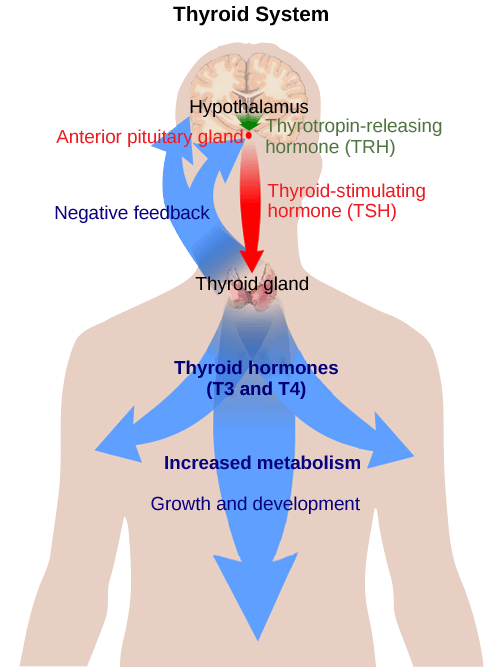
- Thyroxine (T4) and triiodothyronine (T3) regulate metabolic rate and protein synthesis.
- Deficiency causes hypothyroidism and potentially stunted growth.
- Excess leads to hyperthyroidism and increased metabolism.
- Thyroidal glands secrets Thyroidal hormones.
c. Estrogen and Testosterone
- Sex hormones promote the maturation of reproductive tissues and secondary sex characteristics.
- Estrogen spikes during the female menstrual cycle to induce ovulation.
- Testosterone increases muscle mass and lowers fat in males.
d. Adrenaline (Epinephrine)
- Secreted by the adrenal medulla in response to stress.
- Stimulates rapid physiological changes like increased heart rate, alertness, and metabolism.
e. Melatonin
- Released by the pineal gland in response to darkness.
- Plays a major role in regulating circadian rhythms and sleep cycles.
Hormone Imbalances and Disorders
Dysfunction in hormonal systems can lead to various diseases and disorders:
a. Hypersecretion and Hyposecretion
- Hypersecretion: Excessive hormone levels cause abnormal responses. Example: hyperthyroidism
- Hyposecretion: Insufficient hormone levels fail to maintain normal function. Example: hypothyroidism
b. Common Hormone-Related Disorders
Diabetes
- Usually, Type 1: the destruction of insulin-producing beta cells of the pancreas
- Also, Type 2: cells become insulin resistant, and glucose uptake is impaired
- Both types lead to high blood glucose with complications like neuropathy, retinopathy, and kidney damage.
Hypothyroidism and Hyperthyroidism
- Hypothyroidism: thyroid gland under activity leads to fatigue, cold intolerance, weight gain
- Hyperthyroidism: overactive thyroid increases metabolism with weight loss, rapid heart rate, profuse sweating
Addison’s Disease and Cushing’s Syndrome
- Addison’s: adrenal cortex damage causes inadequate cortisol and aldosterone secretion leading to fatigue, low blood pressure, skin changes
- Cushing’s: high cortisol levels from tumors or overtreatment suppress immunity and cause obesity, fragile skin, muscle weakness
c. Diagnosis and Treatment
- Diagnosis is made by testing blood hormone levels, often after the onset of symptoms.
- Treatment may involve replacing missing hormones like insulin, thyroid medication, or steroid supplements.
- Reducing excess hormone levels can also be done through surgery, radiation, or medication in some cases.
- Maintaining proper hormone balance and healthy endocrine function is key.
Frequently Asked Questions (FAQs) on What is a Hormone
What are the main types of hormones?
The four main types of hormones based on their chemical structure are peptide, steroid, amine, and protein. Peptide hormones like insulin are made of amino acids. Steroid hormones like testosterone derive from cholesterol. Amine hormones contain nitrogen and include thyroid hormones and catecholamines like epinephrine. Protein hormones are larger proteins like follicle-stimulating hormone (FSH).
How do hormones travel through the body?
Hormones are released into the bloodstream by endocrine glands once synthesized. Water-soluble hormones like insulin dissolve rapidly to be transported in the blood to their target tissues. Lipid-soluble hormones like testosterone bind to plasma proteins that serve as carriers in circulation. It allows their controlled release over time.
What is the importance of hormone receptors?
Hormone receptors are specific proteins on or within target cells that recognize and bind to particular hormones. This binding then initiates cell signaling cascades and cellular responses. The presence or absence of certain receptors on cells determines which hormones will be effective and which tissues will respond to a given hormone. Receptors confer a high degree of specificity in hormone actions.
How can hormones become imbalanced?
Hormones can become imbalanced when endocrine glands produce too much or too little certain hormones. Hypersecretion leads to excessive hormone levels, while hyposecretion leads to inadequate amounts. Glandular problems, tumors, autoimmune conditions, injuries, or inherited disorders can all cause reduced or increased hormone production. Feedback loops that normally regulate hormone secretion can become defective as well. Maintaining proper balance is essential for health.
What are some examples of hormone disorder treatments?
Treatments for hormone disorders aim to bring levels back into balance. Insufficient hormone levels, like hypothyroidism, are treated by replacing the missing hormones with medications. Surgery, radiation, or drugs can reduce excess tumor hormones. Diabetes requires insulin injections or medications to control blood glucose when the pancreas cannot produce enough insulin. Maintaining the right hormone levels through various treatments can successfully manage most disorders.
Conclusion
Hormones are crucial chemical messengers that profoundly influence our physiology in many ways. They regulate vital processes like metabolism, growth, reproduction, immunity, behavior, etc. Maintaining proper hormone balance is essential for overall health.
Hormone disorders can develop when endocrine glands produce inadequate or excessive amounts of specific hormones. Ongoing research continues to uncover the complex interactions and effects of hormones in humans as well as other animals.
A deeper understanding of what is a hormones paves the way for better diagnostic tests, effective treatments, and hormone-targeted therapies. Although minute in size, hormones enormously impact our overall health and well-being.



